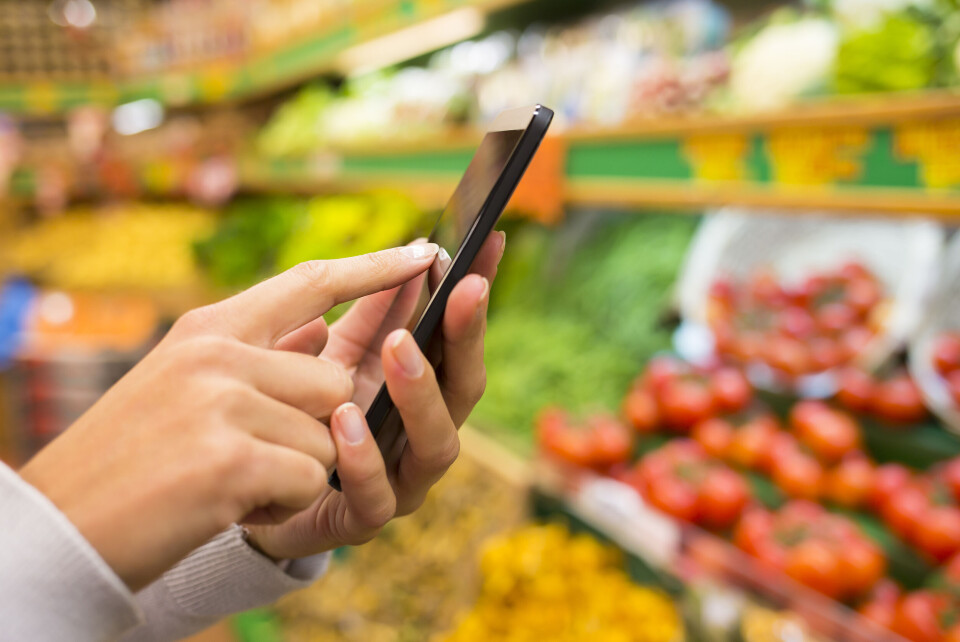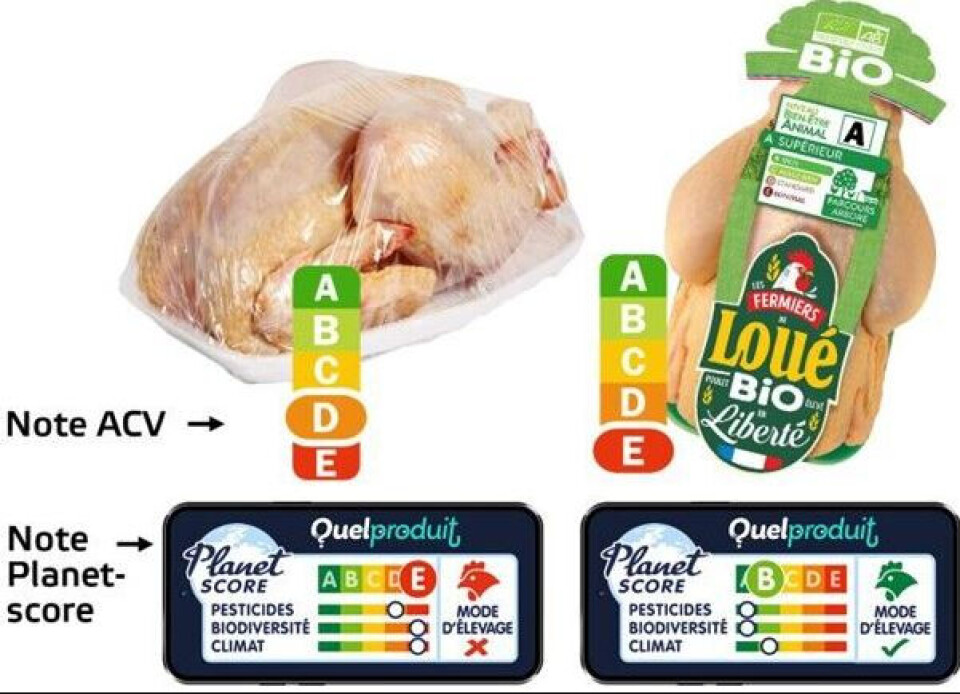-
Top Paris restaurants to sell off 20,000 tableware items
Pieces set to go on sale include glassware, cutlery, and silverware, as well as bistro tables and chairs. Money raised will go in part to charity
-
2025 world economy rankings: France classed above the UK and US
France’s low inflation rate helped it beat many other nations
-
Speed, alcohol, drugs: French ski resorts take action
Behaviour of some skiers a cause for concern as severity of injuries worsens
How to check the green credentials of products in French supermarkets
An app called QuelProduit ranks 135,000 items according to how good they are for the environment

A newly updated French app now allows shoppers to check the environmental credentials of the food they are buying.
The QuelProduit application, from the consumer association UFC-Que Choisir, uses a ‘Planet-Score’ for 135,000 food products.
It works similarly to Nutri-Score, in that it uses a traffic light system and a rating from A to E to rate the product on its environmental credentials.
QuelProduit carries an ‘overall’ score, and then ratings for pesticide use, biodiversity, and climate. It also shows whether the product has passed its test for sustainable farming techniques, with a tick or cross in the right-hand side box.
UFC-Que Choisir said it is aiming for “consumers to use it daily to protect their health and help protect the environment through their purchases”.
It continued: “It is crucial consumers are informed about the real impact of food products so they can make a real ecological transition to protect their health.”
The association is hoping that the new app will make it much easier for consumers to check the score of everyday products. Since 2021, it has been promoting its use alongside 15 other NGOs and organic stakeholders.
From ‘absurd ratings’ to ‘true scale’ of environmental impact
UFC-Que Choisir criticised other environmental ratings currently in place, including that from the French ecological agency Ademe.
It said that these systems “lead to absurd ratings of the environmental impact of food, as shown by the fact that it systematically gives organic produce a worse grade than intensively farmed food produced with large quantities of chemical fertilisers and pesticides”.
It said that, for example, Ademe’s score would give the lowest grade of 'E' to the organic chicken Poulet de Loué, and 'D' to standard chicken fed on cereals with no guarantee of origin, and with GMO soya meal.
In contrast, the association said that its Planet-Score shows the “true scale of environmental impact”. In this example, it would award an 'E' to ‘conventional’ chicken and a 'B' to organic chicken.
This is because the feed for the organic chicken includes locally produced cereals and soya certified as free from deforestation, pesticides, and chemical fertilisers.

Similarly, the score can determine the health and environmental differences between an organic pizza and a non-organic one.
As an example, it said that its system would give a ‘standard’ Margherita pizza a D rating, while an organic counterpart from Monoprix would receive a C. In the Ademe rating, both would receive a C, with no differentiation between them, nor explanation of how the rating was decided, it said.

Inflation and environmental concerns
The association said the app is even more useful today because of the current inflation and environmental challenges.
It said: “At a time when inflation is making organic food even less accessible to low-income households, it’s useful to use certain conventional agricultural products that limit their environmental and health impact (low use of pesticides, local ingredients, etc.). But you need to be able to identify them.”
UFC-Que Choisir also condemned President Emmanuel Macron’s recent pledge to “take a break from environmental regulations” as “ill-advised”.
How can I see the Planet-Score of products?
The rating is now used by more than 200 manufacturers and 21 supermarket and organic food shop brands. These include Biocoop, Lidl, Naturalia, Franprix, La Vie Claire, Monoprix, Naturéo and Greenweez, UFC-Que Choisir said.
More than 30 brands now display the Planet-Score directly on their packaging across France, as well as in Spain and Germany, meaning that consumers do not even need to check the app before purchasing to see the information.
UFC-Que Choisir has now called for its Planet-Score to be displayed on all food packaging.
In the meantime, shoppers can download the app and use it for free. It is available for both iOS (iPhones) and Android devices. Then it is just a simple case of using your phone’s camera to scan the barcode of the product.
Related articles
Four everyday eco-friendly changes launching in France this year
























